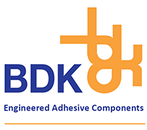Microplate sealing films are widely used in diagnostics, research, and medical device workflows. In all of these use cases, it’s essential that the sealing films work efficiently by securely containing samples within their individual wells.
When the microplate film works as it should, it helps to prevent contamination occurring from the external environment and between wells. This ensures sample integrity, system reliability and accuracy of test results.
Automation of assays and experiments play a crucial role in fast and efficient microplate processing. For this reason, BDK is dedicated to producing high-performance adhesive solutions, such as microplate sealing films, for medical applications.
Understanding Microplate Sealing Films
Microplate sealing films perform several different functions, these include:
- Preventing evaporation of samples
- Protecting microplate wells from environmental contamination
- Safely containing samples for the transportation of microplates
- Allows effective sample extraction and storage of microplates
- Enhances sample integrity and data reliability
- Prevents cross-contamination of wells
BDK microplate sealing films are trusted across a range of applications including:
- PCR
- qPCR
- Cell culture
- Tissue culture
- Elisa
- Compound storage
- Chemical assays
Due to the wide range of uses of microplate sealing films, a variety of sealing film formats are available. We offer a variety of microplate sealing formats tailored to suit every application, instrument, and lab environment, such as:
- Self-adhesive microplate sealing films
- Heat sealable microplate sealing films
- Pressure sensitive microplate sealing films
- Pierceable and gas permeable microplate sealing films
Types of Sealing Films
Choosing the correct microplate sealing film for your application is essential to ensure that the integrity of samples is maintained. Below is a breakdown of the main types of sealing films and their benefits.
Self-Adhesive Sealing Films
Self-adhesive sealing films are typically made from polypropylene or polyester film.
Benefits:
- Easy to apply by hand or with a hand roller
- No special equipment needed to use
- Clean, secure seals with strong adherence
Limitations:
- Seal strength may be compromised under extreme conditions
Depending on the type of adhesive used with these sealing films and its formulation, there is the risk of potential leachables. However, this is evaluated during testing to ensure this is avoided.
Heat Sealable Films
Heat seal films are designed to form a tight seal over each individual microplate well when heat is applied to the film.
Benefits:
- Provides hermetic, high-integrity seals ideal for PCR and qPCR
- Reliable seal ensures automation compatibility and suitability for high throughput processing
- Suitable for use in thermal cycling
- Compatible with long-term storage environments
Limitations:
- Sealing equipment is required
- Consistent heat profiles are needed
Pressure Sensitive Films
As their name suggests, pressure-sensitive films feature adhesives that are simply activated by pressure.
Benefits:
- Quick and easy to apply with no equipment required
- Ideal for fast-paced, high-volume workflows
- Optical clarity supports easy visual inspection
Limitations:
- Seal integrity may be compromised in some conditions, especially in high temperatures
- Adhesive residue may be left behind
Pierceable & Gas-Permeable Films
Gas permeable seals allow for controlled gas exchange through the film and are designed for post-sealing access via pipette or probe.
Benefits:
- Ideally suited to breathable environments, such as cell and tissue culture
- Allows gas exchange while keeping airborne contaminants out of the sample
Limitations:
- Evaporation control may be challenging
- Adhesives may not be durable enough for some conditions
Key Considerations for Material Compatibility
Material compatibility is a crucial consideration when selecting microplate sealing films. Here are some of the key factors to consider when selecting sealing films:
- Potential interactions between sealing film adhesives and microplate materials
- Possible off-gassing caused by incompatible materials interacting
- Risk of contamination of biological assays
- Material compatibility could cause processes to fail regulations such as ISO 10993 and fail to comply with FDA guidance
Films should also be selected based on whether they will be used in automated or manual applications. This is because tolerances, characteristics of the peel, and alignment accuracy can all impact the reliability of the sample and result in potential contamination.
BDK films are manufactured to meet the highest standards of material compatibility with all standard microplate materials. We optimise our solutions for consistent performance in sterile and regulated environments together with cleanroom production and low particulate generation. Our processes always ensure full compliance with industry standards and we take into consideration application methods when manufacturing sealing films.
Innovation in Adhesive Technologies
Innovation in adhesive technologies means that modern sealing films are being developed to overcome many of the main challenges previously faced when using microplate sealing films. Recent advances include:
- Development of high-tack, easily repositionable seals for precision alignment
- Adhesives with increased thermal and chemical stability
- Advances in low out-gassing, low-residue formulations
- Move towards more recyclable and environmentally friendly materials
Adhesive technologies evolve all the time, so it’s essential to work with a material partner at the forefront of the latest advancements in sealing film technology. BDK leads with innovation in adhesive technology and our R&D team continually enhances product performance for our customers.
With decades of experience and proven expertise in life sciences workflows, BDK is the partner of choice for distributors seeking reliable, high-performing sealing solutions. Our vertical integration, technical support, and customisation capabilities ensure a seamless fit for any application.
Overall, each variety of microplate sealing film offers its own pros and cons. Our experience and available material choices results in efficient material selection and quick testing processes, so you know you will be choosing the right one for your application.
Contact us today to discover how we can support your customers with industry-leading microplate sealing solutions.
